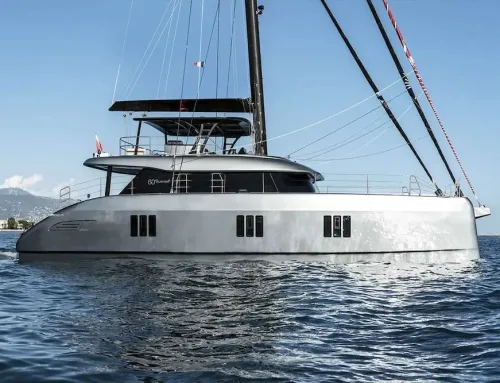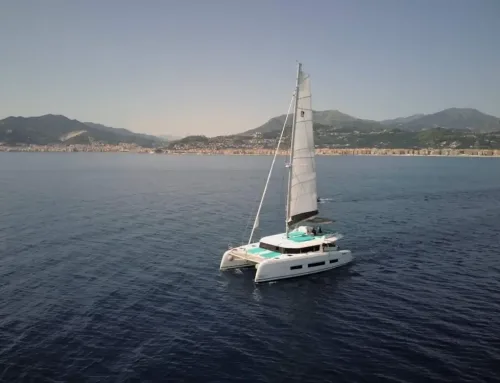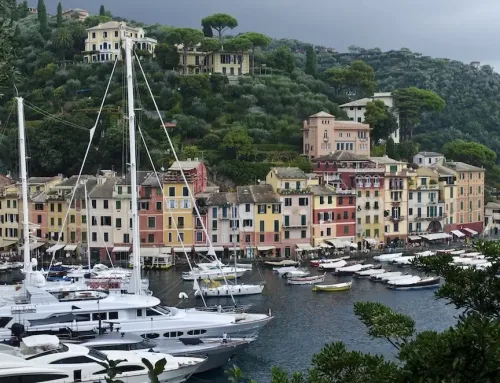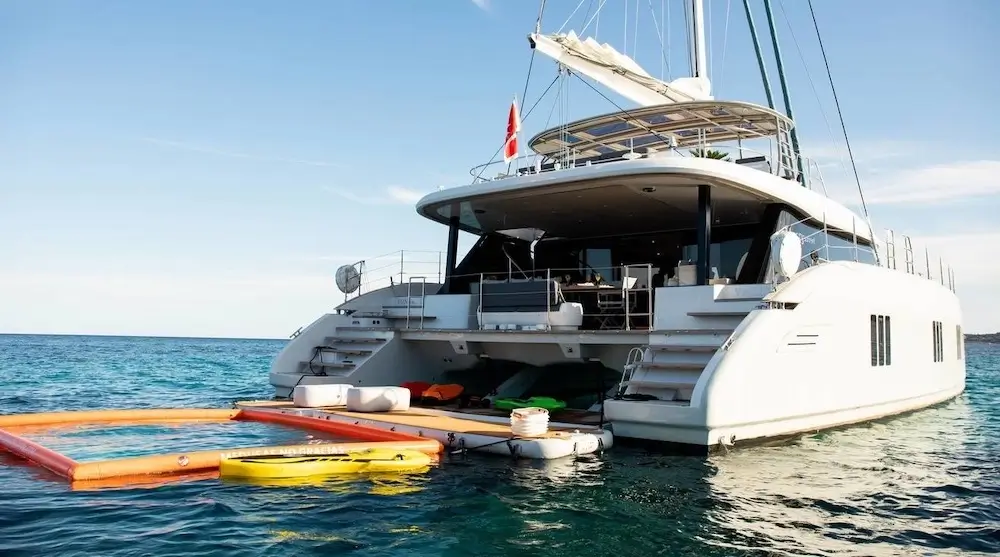
Is a catamaran safer than a yacht?
Sailing enthusiasts often find themselves at the crossroads when choosing between a catamaran and a traditional monohull yacht. While both have their unique set of advantages, the debate on safety is often the most heated. As we set sail on this topic, let’s dive deep into the foundational differences and see which one emerges as the safer option.
Understanding the Core Design
Before jumping into the safety debate, it’s essential to grasp the fundamental designs of both vessels.
Catamarans: The Dual-Hulled Beauty
A catamaran is a watercraft that features two parallel hulls of equal size. This design not only gives catamarans a broad beam but also ensures they sit more on the water surface, rather than in it. Catamarans, due to their design, tend to have more space onboard, often making them a top pick for luxury seekers who’re looking to charter in regions like Italy. With their increasing popularity, a wide range of catamarans are available for charter.
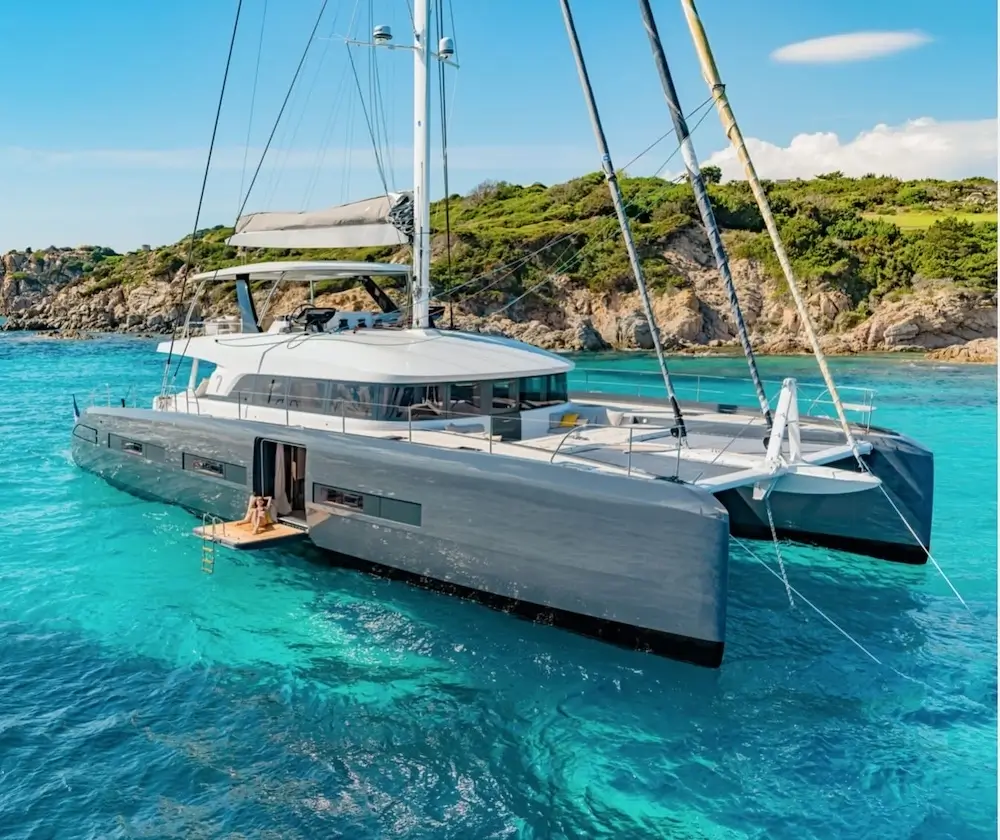
Is A Catamaran Safer Than A Yacht 1
Yachts (Monohulls): The Traditional Elegance
On the other hand, traditional yachts or monohulls have one hull, and they sit deeper in the water, allowing them to slice through waves more effectively. This characteristic often gives them the upper hand in speed, especially when beating upwind.
Stability on Water
One of the most significant points of contention is stability. So, how do both fare in choppy waters?
Catamarans: The Stability Champions
Due to their wide beam and dual-hulled design, catamarans are less prone to heeling (tilting) than their monohull counterparts. This stability ensures that onboard activities can continue even when the sea gets a bit rough, making it a preferred choice for those who’re new to sailing or are prone to seasickness.
Yachts: Keel-Dependent Stability
Yachts rely on their deep keel for stability. While they heel more than catamarans, they are designed to right themselves up after a capsize, a feature catamarans lack. However, it’s worth noting that a modern yacht’s chances of capsizing are minimal.
Safety During Manoeuvres
How do both vessels behave when performing sailing manoeuvres?
Catamarans: A Gentle Glide
Due to their stable design, catamarans offer a smoother experience when tacking or gybing. Their dual engines (one in each hull) provide better maneuverability, especially in tight marinas. For novices, this could translate to fewer errors during critical maneuvers, enhancing safety.
Yachts: Skill-Intensive Manoeuvres
Handling a yacht requires a bit more skill, especially during maneuvers. Their deep keel and single hull mean tacking and gybing can be more intense. However, with experienced hands on deck, yachts can be maneuvered with precision.
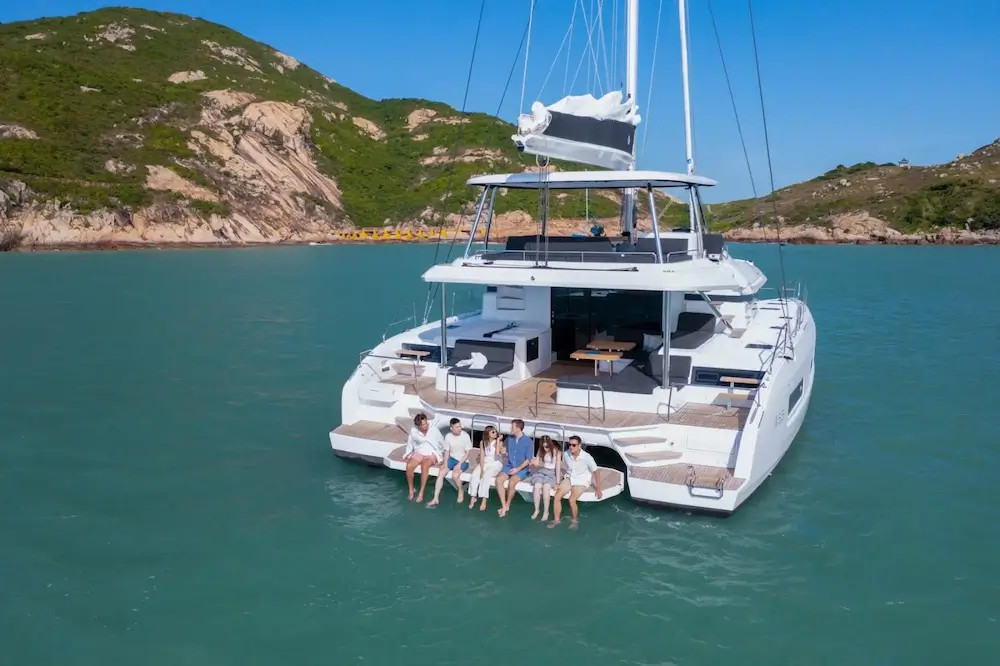
Is A Catamaran Safer Than A Yacht 2
Space and Comfort: A Safety Perspective
Space isn’t just about luxury; it’s also about safety. How do sailors benefit from the design in terms of space?
Catamarans: Spacious & Open
Catamarans are often lauded for their ample deck space. The wide beam ensures that interior spaces are expansive, making movement easier and less restrictive. Moreover, sleeping quarters in catamarans are often located away from the central area, offering more privacy. Those curious about the sleeping arrangements on a catamaran can dive into this comprehensive guide.
Yachts: Compact & Cozy
While yachts might not boast the spacious decks of catamarans, they offer a cozy and intimate setting. The interiors are more compact, which means everything is within arm’s reach, a benefit during rough seas where movement should be minimized.
Performance, Cost, and Draft: The Underlying Safety Aspects
Beyond the obvious design differences, a vessel’s performance, cost, and draft play essential roles in determining safety. Let’s explore these factors for both catamarans and yachts.
Navigating Through the Waves
When sailing in rough seas, the way a vessel interacts with waves can determine its safety.
Catamarans: Riding Over the Waves
Catamarans, with their broad beam, tend to float atop the waves rather than cutting through them. This can offer a smoother experience in light to moderate conditions. However, in stormy weather, this very trait can be a disadvantage, making the boat more susceptible to wave action.
Yachts: Cutting Through with Grace
The monohull design of yachts allows them to slice through waves. In heavy seas, yachts can offer a more predictable ride, ensuring that they can handle stormy conditions better.
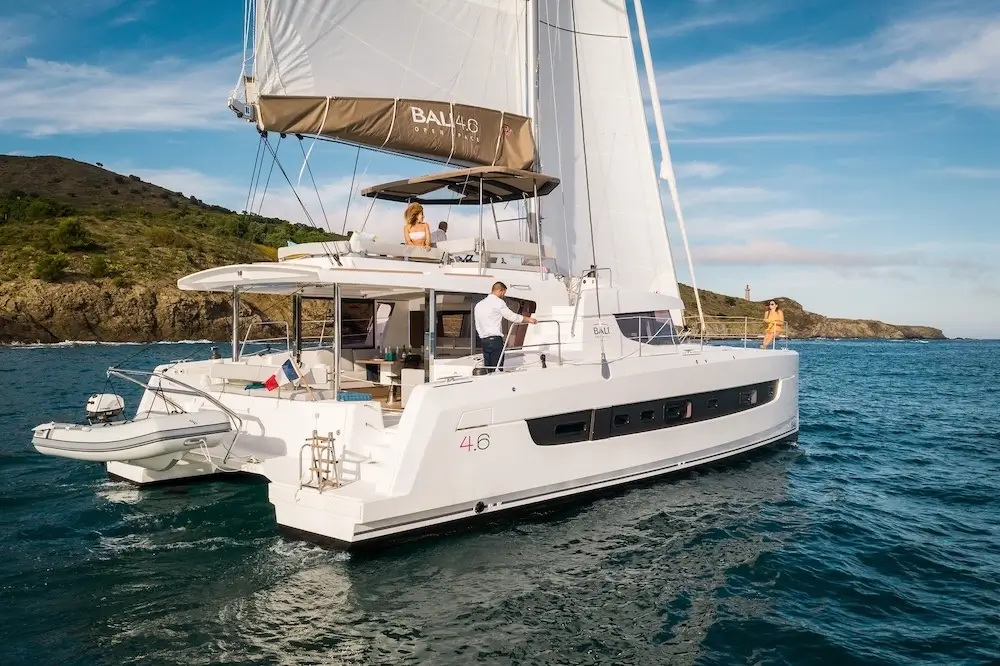
Is A Catamaran Safer Than A Yacht 3
Economic Implications: Maintenance and Cost
The safety of a vessel is directly related to its maintenance. And, often, the cost of upkeep plays a significant role in ensuring routine checks.
Catamarans: Pocket-Friendly Maintenance
Given their increasing popularity, catamarans have seen a surge in production, leading to competitive pricing for parts and maintenance. Their twin-engine setup can be advantageous. If one engine fails, the other can be used, adding an extra layer of safety during voyages.
Yachts: Steeper Costs, But Worth the Price?
Yachts, with their long-standing history, have a well-established maintenance protocol. While their upkeep might be costlier than catamarans, their robust build ensures longevity, justifying the investment.
Draft Considerations: Accessing Secluded Areas
The draft of a vessel determines how close it can get to shorelines or navigate shallow waters.
Catamarans: Shallow Draft Advantages
Catamarans have a shallow draft, which allows them to approach beaches closely and anchor in shallower waters. This trait is especially beneficial when exploring secluded areas or when seeking shelter near the shore during adverse weather.
Yachts: Deep Drafts for Deep Waters
Yachts, with their deeper drafts, are better suited for open waters. While this means they might not access shallow regions as catamarans do, their design ensures better stability in deeper, rougher seas.
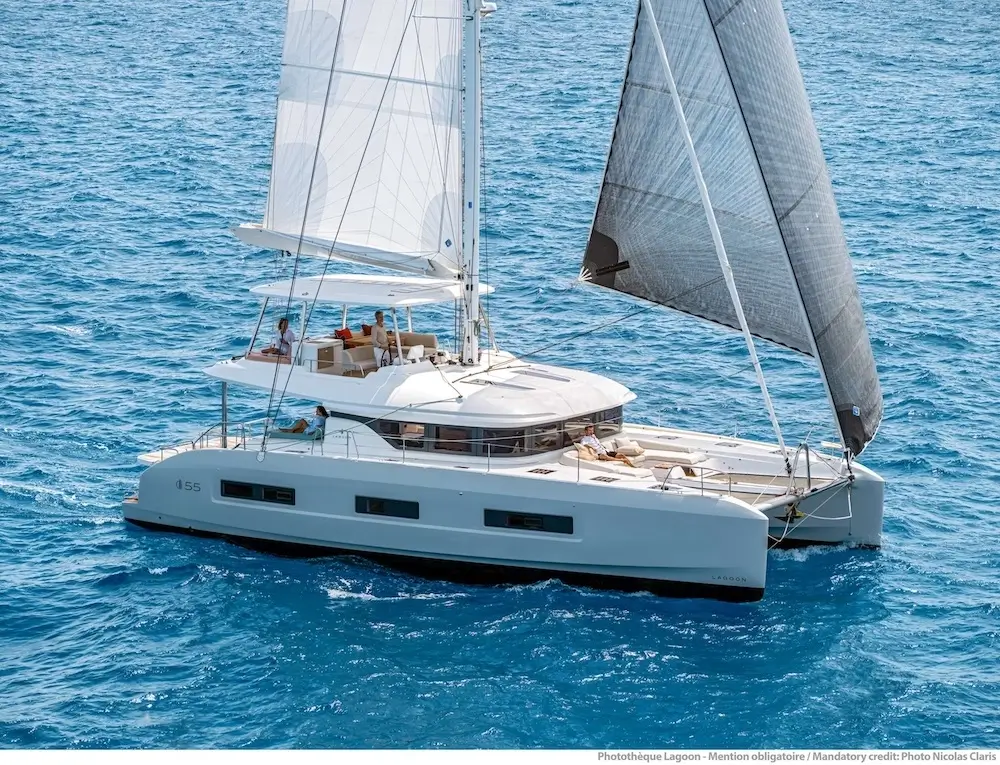
Is A Catamaran Safer Than A Yacht 4
Safety Equipment and Amenities
No debate on safety is complete without considering the equipment and amenities on board.
Catamarans: A Modern Touch
Modern catamarans are equipped with the latest safety equipment. Their spacious design also allows for easy storage and access to safety gear. Additionally, amenities like multiple restrooms, vast lounging areas, and more prominent galley spaces contribute to comfort, indirectly enhancing safety by reducing fatigue.
Yachts: Classic Yet Contemporary
Yachts, being the age-old favorites, come equipped with tried and tested safety gear. Their design ensures that equipment is within arm’s reach, crucial during emergencies.
Making an Informed Choice: The Final Verdict on Safety
In the debate between catamarans and yachts, one might wonder if there’s a clear winner in terms of safety. Each vessel brings a unique set of attributes to the table. It’s essential to weigh these attributes against personal preferences, sailing conditions, and the purpose of the voyage.
The Stability Aspect Revisited
We discussed how catamarans, with their dual-hull design, offer incredible stability in calm to moderately rough seas. This stability can significantly reduce seasickness and ensure a comfortable voyage for those on board. However, in extreme weather conditions, this same stability can be a vulnerability. Yachts, on the other hand, might heel more, but their ability to right themselves offers a different kind of safety net.
Size and Space Matters
Catamarans: A Roomier Option
One of the significant advantages of catamarans is their spaciousness. This feature isn’t just about luxury. A spacious deck and interiors allow for easier movement, reducing the chances of accidents on board. The ample space also ensures better ventilation, enhancing the overall experience. And, if you’re wondering where to relax during your voyage, here’s a guide on the sleeping options available on a catamaran.
Yachts: Compact but Efficient
Yachts might not offer the same amount of space as catamarans, but their design is streamlined and efficient. Every nook and corner is designed with a purpose, ensuring that sailors have everything they need within arm’s reach.
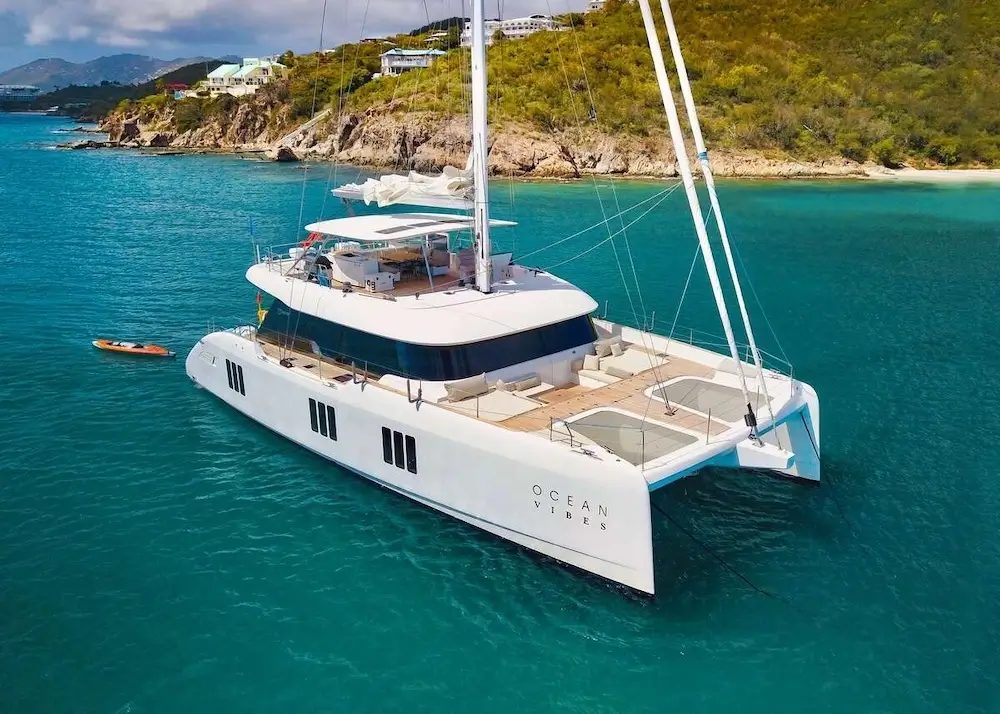
Is A Catamaran Safer Than A Yacht 5
Consider the Crew and Your Expertise
No matter the vessel, safety is often determined by the crew’s expertise and the decisions they make. A well-trained crew can handle emergencies efficiently, regardless of whether they are on a catamaran or yacht. Similarly, if you’re sailing yourself, your experience and judgment play a crucial role in ensuring safety.
What’s the Verdict?
So, is a catamaran safer than a yacht? The answer isn’t black and white. Both vessels have their advantages and challenges. It boils down to personal preferences, the nature of the journey, and the conditions you expect to encounter. Before making a choice, it’s worth exploring the options available, like the diverse fleet offered by Catamaran Charter Italy.
Conclusion
Choosing between a catamaran and a yacht is a personal decision, influenced by various factors. While catamarans offer stability and space, yachts bring with them a legacy of tested safety in diverse conditions. Ultimately, the safety of any vessel is a combination of its design, maintenance, the crew’s expertise, and the decisions made during the voyage. As the saying goes, “A smooth sea never made a skilled sailor.” Regardless of your choice, respecting the sea and understanding your vessel will ensure a safe and memorable sailing experience.

